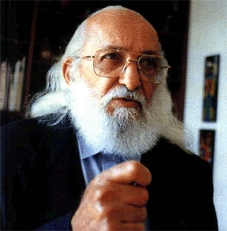We began our final, full day in
Cuernavaca with classes at CETLALIC. The
weather was absolutely beautiful and the gardens around the school were in full
bloom. We have been very lucky to be
able to study in the midst of such beauty—banana and mandarin trees, birds of
paradise and other flowers in constant bloom, palm trees swaying in the breeze
and vines and plants add to the ambiance of the stunning outdoor classroom.
After classes the preparations
began for our farewell gathering.
Committees immediately set to work like ants in a colony. One group arranged the tables and seating,
another helped prepare the food, and others readied the music. Within one hour CETLALIC had been transformed
and the farewell fiesta began! Our host
families joined us for the wonderful celebration filled with delicious food,
good conversation and lots of dancing—both Mexican and American. The highlight of the event was the
certificate presentation. Each member of
the group received a certificate of completion from CETLALIC and had an
opportunity to give a short speech about their experience in Cuernavaca. It was a wonderful way to conclude our stay.
Re-reading the various posts of the
past four weeks, we have been reminded of the many wonderful experiences we
have had here. Thanks to Fulbright, the
experience and knowledge of Marta and Jorge (the leaders of CETLALIC), and Dr.
Hatt we have truly benefitted from a wonderful program. We would like to take this opportunity to
share a few bits of information that haven’t made the blog yet. Many are simply things that were said in
passing or are observations we have made during our time here. We hope that you enjoy our tidbits.
Planning for a Mexican fiesta is
somewhat different from planning for a gathering in the US. For example, when helping to prepare a
preliminary menu for the event, we learned that a buffet of tacos, lettuce
salad, fruit salad, guacamole, rice, and beans was somewhat unusual. Fruit salad was not considered “normal” or
“complementary” for such a display. In
addition, peanuts, popcorn or bread should be available on the tables before
the meal for guests to eat. Our hosts at
CETLALIC take great time and effort in planning a fiesta. We truly enjoyed learning about Mexican customs
at parties while helping organize the gathering.
Upon arrival in Cuernavaca, one of
the first things many of us learned was to avoid the phrase, “I live near
Pemex.” This phrase is sure to cause
much confusion, as there are Pemex gas stations on nearly every other
corner. The reason for this is that
Pemex is the national gas station. There
are no other gasoline companies in Mexico.
The creation of Pemex was the result of many people being upset about
the influx of foreign oil companies.
Therefore, in the late 1930’s the Mexican government created a
nationalized petroleum company. One
benefit of this system is that the price is fixed—kind of nice when you
consider the amount of time/effort we spend driving around town looking for the
lowest price!
Shopping around Cuernavaca, we’ve
noticed that prices, for the most part, are pretty comparable to those in the
US. Bread, for example, starts around
$1.50 (US dollars) per loaf, a candy bar is around $1.00, gasoline is about
$3.00 per gallon, and ice cream at a Baskin Robbins-type store is approximately
$3.50 per scoop. There are markets where
bargaining is the norm, but even there, prices are comparable. What is interesting however, is that salaries
for the average worker are much lower than in the US. As mentioned in a previous posting, many
teachers work two shifts (or two jobs) to make enough money to cover basic
expenses. During the parent panel, we
learned that in one family one parent drives a taxi to earn enough money to pay
the bills and the other works in order to afford to send their children to
school. Living with such tight finances
affords little leeway for vacations, repair work, unanticipated medical bills
and even building a savings.
The prevalence of open-air
restaurants and live music, both at restaurants and in the city center, is a
welcome change to the more private options available in central Illinois. A trip to the city center almost always
results in finding music of some sort.
Our favorite “find” was a section of the city center that had been
blocked off with chairs. There was a
mixture of salsa, bachata, and cumbia music playing and several older couples
dancing. Watching them enjoy the beautiful
weather, joyous music and company of each other was truly heart-warming.
Our walk to the bus stop is always
filled with enticing aromas. There are a
number of families who set up stands along the sidewalks specializing in
everything from al pastor tacos (pork tacos), pollo rotizado (roasted chicken),
homemade tortillas and gorditas, papas fritas (fresh fried potato chips) and
freshly squeezed fruit juices. Even
though our host mother was an amazing cook and we always left home unable to
eat another bite, some of the stands were difficult to pass up!













